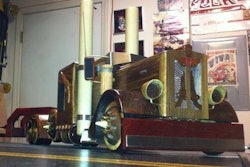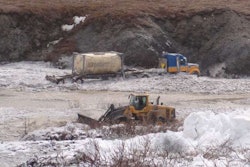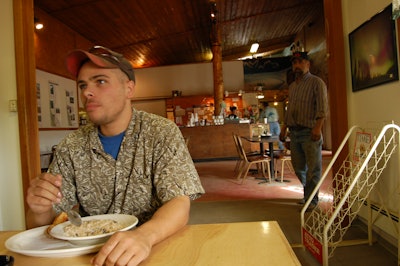 One relic of Coldfoot's history is the tree-trunk pole, visible in the background. After truckers finished months of hammering together scrap wood from pipeline insulation crates to form the main building, in celebration they raised the pole, "and engraved their names for future truckers and guests to see," says the Coldfoot website. "To this day, the center pole does double duty: as a communications center, crowded with notes for truckers, miners and other folk in the area."Max Heine
One relic of Coldfoot's history is the tree-trunk pole, visible in the background. After truckers finished months of hammering together scrap wood from pipeline insulation crates to form the main building, in celebration they raised the pole, "and engraved their names for future truckers and guests to see," says the Coldfoot website. "To this day, the center pole does double duty: as a communications center, crowded with notes for truckers, miners and other folk in the area."Max Heine
* * * *
A rare roadside attraction on the Dalton
Faithful watchers of “Ice Road Truckers” know that there ain’t much between Fairbanks and Prudhoe Bay. There’s a few state highway facilities for maintenance of the Haul Road, a few resort facilities (closed in winter) when you cross the Yukon River, and then Coldfoot Camp at roughly the halfway mark.

 Read more in Overdrive's weekly 60th-anniversary series of look-backs on trucking history, and that of the magazine itself, via this link.
Read more in Overdrive's weekly 60th-anniversary series of look-backs on trucking history, and that of the magazine itself, via this link.
Coldfoot began around 1898, earning its name when thousands of gold-hungry settlers arrived, then quickly got cold feet about the prospect of wintering there, according to the settlement’s website. Many made like birds and headed south.
“At its height, Coldfoot had one gambling hall, two roadhouses, seven saloons and 10 ‘working girls’ (many of the local creeks are named for these friendly women),” says the website. By 1912 the miners relocated to richer ground 13 miles away in Wiseman, and Coldfoot became a ghost town.
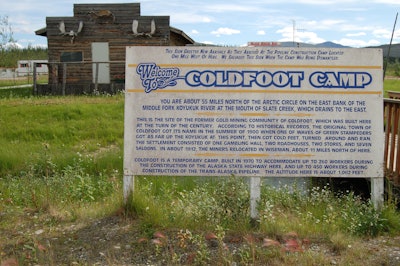 The sign says Coldfoot was "a temporary camp, built in 1970 to accommodate up to 260 workers during the construction of the Alaska state highway here, and up to 450 workers during construction of the Trans-Alaska Pipeline."
The sign says Coldfoot was "a temporary camp, built in 1970 to accommodate up to 260 workers during the construction of the Alaska state highway here, and up to 450 workers during construction of the Trans-Alaska Pipeline."
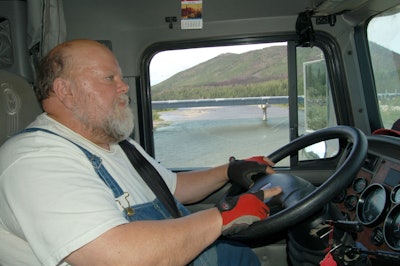 I stopped at Coldfoot for lunch when I rode with Carlile Transportation driver George Spears in 2006. Behind him, the Trans-Alaska Pipeline crosses the Yukon River. Spears has since retired to his farm in Illinois.
I stopped at Coldfoot for lunch when I rode with Carlile Transportation driver George Spears in 2006. Behind him, the Trans-Alaska Pipeline crosses the Yukon River. Spears has since retired to his farm in Illinois.
— Max Heine
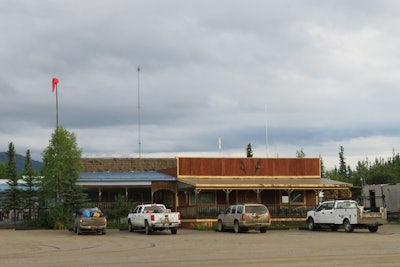 While a good amount of Coldfoot Camp’s business is tied to the trucks that traverse the Dalton Highway, also known as the Haul Road, the historic site offers lodging and year-around excursions for visitors, including viewing the Northern Lights in winter.
While a good amount of Coldfoot Camp’s business is tied to the trucks that traverse the Dalton Highway, also known as the Haul Road, the historic site offers lodging and year-around excursions for visitors, including viewing the Northern Lights in winter.
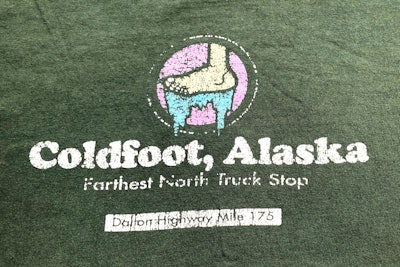 I still have a well-worn T-shirt that's a souvenir from stopping at Coldfoot Camp.
I still have a well-worn T-shirt that's a souvenir from stopping at Coldfoot Camp.
[Related: A salute to the 'Old Filthy' 1957 Kenworth fuel hauler]






